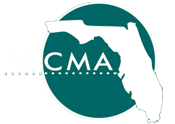By Troy Bell
School systems across the country are currently using communication apps to handle proprietary communication throughout:
- The district (staff, schools, parents)
- The individual schools (within and between schools – teachers and parents)
- Within each classroom (between parents and teachers)
As a result of the effectiveness experienced with such a 3-dimensional School Communication App – with personnel, with constituents, and between participants – to ensure validated information is disseminated and dialogue is encouraged and facilitated between constituents and staff, and (in prescribed cases) between participants or participating organizations, our city explored the use of such an app on a city-wide basis.
Informing Cities Through School Improvement Strategies
Research indicates that student performance is influenced by 25% of interactions that occur within school settings and 75% of interactions that take place outside of schools. Consequently, schools are capable of affecting only a portion of overall student achievement on their campuses. School districts benefit from the ability to routinely engage with stakeholders and directly address their mission objectives through regular face-to-face interaction with staff and community members. However, given these findings, efforts to enhance student achievement have increasingly focused on fostering engagement with students and parents beyond the physical school environment. The adoption of a smartphone communication application has enabled continuous, real-time connectivity between students, parents, and schools. This mobile platform allows constituents to remain informed and connected at any time and location. As a result, access to information and knowledge resources now extends beyond traditional school premises, contributing to a broader educational experience.
Parallels Between Public Schools and Municipalities
Public Service and Funding Structure
Public schools and municipalities both operate as public service organizations, funded through a social contract that permits taxation in return for the delivery of essential services. This approach enables the provision of services at an economy of scale, promoting greater efficiency and effectiveness compared to what could be achieved without the structure of a district or municipality.
Jurisdictional Nature and Electoral Participation
Both entities function within specific jurisdictions. Electoral participation, such as voting in school board or city council elections, typically requires residency within the respective jurisdiction. While the primary constituents are residents, services may also extend beyond jurisdictional boundaries in certain cases, such as school choice options for nonresident students or services provided to nonresident visitors, shoppers, or employees within the municipality.
Constituent Engagement and Facilities
The primary constituents of both public schools and municipalities are the residents who belong to the school district and the municipality. Both entities maintain facilities that are accessible to their constituents. School buildings experience daily visitation by nearly all of their constituents during the school session, ensuring regular engagement. In contrast, municipal facilities such as city hall, parks and recreation centers, building and zoning offices, and public works departments tend to receive only occasional visits from constituents.
Outreach and External Ambassadors
While schools benefit from consistent, daily interaction with their constituents within school buildings, cities rely on less regular forms of outreach. Municipal external ambassadors—such as firefighters, police officers, and solid waste collection personnel—occasionally visit residents in the community, providing services and maintaining a connection between the municipality and its constituents.
A Defining Distinction
School districts benefit from having a consistently engaged audience within their schools, as students and parents are regularly present in these facilities. District staff are afforded frequent opportunities to interact with their constituents, enabling them to effectively advance the mission, vision, and values of the organization during these direct engagements. The primary assets facilitating service delivery and communication are district personnel and school building infrastructure. When services do not meet constituent expectations, the ongoing presence of both staff and stakeholders in the school environment allows for prompt and direct dialogue—whether among staff members, between staff and leadership, or between constituents and district representatives. In contrast, municipalities historically lack this expectation of regular and reliable interaction with residents. Recognizing that approximately up to 80% of student learning occurs outside traditional school settings (Winne & Hadwin, 2018), forward-thinking school districts are now exploring strategies to expand their outreach beyond school grounds and into students’ homes.
Municipal Opportunity
Utilize emerging technologies to establish consistent channels of communication, dialogue, and interaction with constituents, facilitating meaningful engagement and the exchange of verified information through multiple pathways—including staff-to-constituent, constituent-to-staff, and organization-to-organization. Avoid solely relying on residents who visit City facilities. To advance your organization, purposefully reach every segment of the community with more substantive and interactive methods than traditional one-way messaging, such as one-way push notifications or static websites. Develop strategies to engage residents within their homes, as well as city retail property owners and industrial business site owners, on a regular basis, rather than depending on infrequent visits to municipal locations. High-quality, high-performing service demands we get out of the ivory tower of City Hall. We must utilize technology, leverage and adapt staff in the field to be ambassadors of the city’s persona, and view every opportunity to engage the community as a chance to wow our constituency.
Best Practice – Leveraging Technology for Constituent Engagement
City-Owned Mobile Communication Platform Implementation
During the COVID-19 pandemic, safety protocols and restrictions on face-to-face interactions prompted our City to innovate its approach to constituent engagement. Drawing inspiration from strategies used in the public education sector, the City piloted a proprietary platform and mobile communication app that was adapted from the school district’s setup. This initiative aimed to directly reach constituents, counteract COVID-related misinformation, and deliver a broad array of public service benefits.
App Enrollment and Incentivization Strategies
The City promoted app sign-up by distributing enrollment links to all water service account users, including residents, retail shops, and industrial sites. For apartment buildings or multiplexes with a single water account serving multiple users, direct mailers and newsletters were employed to facilitate individual resident account setup. To encourage adoption, users were offered a water service payment discount upon signing up or creating an account. Continued engagement with the app was incentivized through early-payment discounts for utility or tax payments processed via the platform.
Rollout of Enhanced City Services
After account creation, the City launched a series of new services on the platform in regular phases. The “Point-Click-Fix” feature enabled users to report infrastructure issues—such as potholes, crooked signs, or broken hydrants—by submitting GIS-linked photos through the app. This process included immediate acknowledgement and ongoing repair status updates. Additional features included a missed trash pickup reporting option and a volunteer signup function for city-sponsored events. A parking payment and discount option was also introduced to streamline parking services.
Interactive Communication and Accessibility Features
The app allowed users to live-stream city council meetings and access council agendas. It included a bulletin board for announcements, advertisements, event schedules, and a banner feature to provide critical information or safety and security alerts. For residents without smartphones, the platform supported sign-ups for automated safety dial notifications via landline phones. Users could contact any of the City’s twelve departments or the council directly, fostering two-way dialogue between the departments and individual users.
Integration with Community Organizations
An additional feature enabled nonprofits and neighborhood associations to establish a presence on the app as quasi-city departments. This facilitated communication within and between these organizations, as well as between residents and the organizations themselves, further enhancing community engagement.
User Feedback and Performance Improvement
The app regularly surveyed users with short, four-question feedback forms about any City service they had used or any employee they had interacted with. This feedback was utilized in employee evaluations and for improving app performance, ensuring responsive and high-quality service delivery.
Economic Development and Incentives
The final phase of the app rollout introduced an economic development feature that rewarded users with “stars” for app usage, city volunteer work, event attendance, and early tax or utility payments. City residents could redeem accumulated stars for discounts at local retailers and service providers within the city, further incentivizing engagement and supporting local businesses.
- Winne, P. H., & Hadwin, A. F. (2018). A review of research on bridging the gap between formal and informal learning. Journal of Computer Assisted Learning, 34(5), 501–523. https://doi.org/10.1111/jcal.12252
- (2024, March 1). School district communication app.https://www.bloomz.com/school-district-communication-app.





